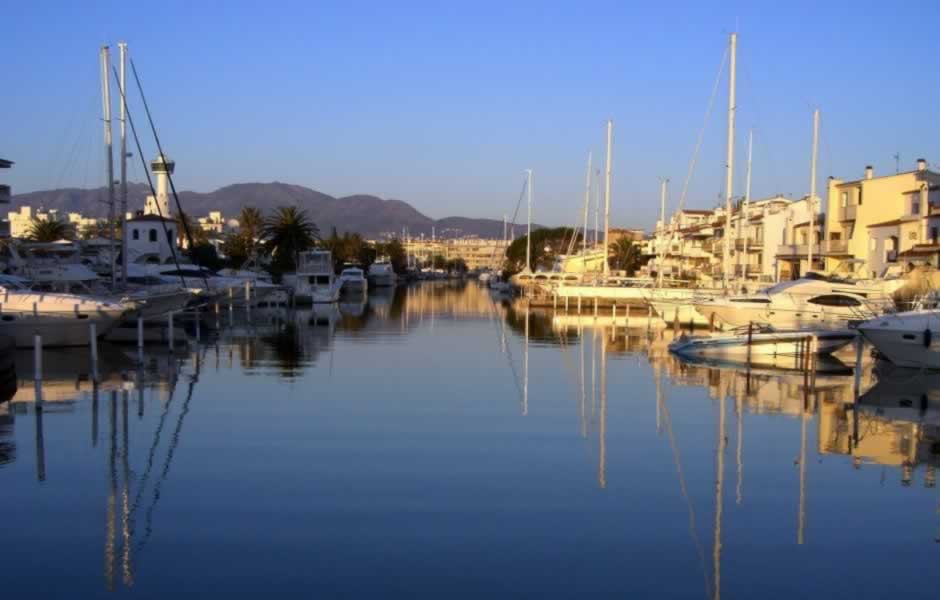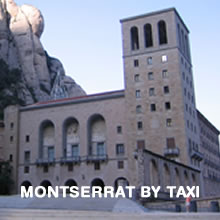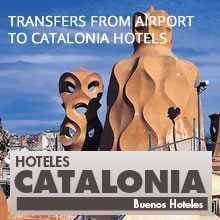
Visit Empuriabrava (Ampuriabrava)

Private Transfer to Ampuriabrava
Empuriabrava (Ampuriabrava in Spanish) is one of the most unusual towns along the Costa Brava.
Empuriabrava is unique because much of its beautiful residential area is built on and around a system of canals. The majority of these residencies have a mooring at the bottom of the garden making Empuriabrava the largest residential marina in Europe, if not the world!
With some reminiscensce of Venice or Miami Beach, Empuriabrava is a major, upmarket tourist destination. It is particularly popular with Germans an the French, and — to a much lesser extent — Dutch and British visitors as well.
As you might expect, there’s a vibrant nightlife scene with bars, discos, and a range of restaurants — the latter mostly aimed at foreigners eager to enjoy familiar food.
Normally home to 7800 local residents, at the height of the summer season the town’s population swells to nearly 80,000 people.
It also is a sought-after location for Catalan and other Spanish vacationers and homeowners. Lately many Russians have been buying properties here as well (as they have being doing in places up and down the coast).
What Empuriabrava has to offer
The city’s main draws, aside from providing a playground for rich yacht owners, are
- A great beach: Platja Empuriabrava : 1.5 kilometers long and 90 to 100(!) meters wide
- A scala of watersports: sailing, surfing, windsurfing, water-skiing, para-skiing, fishing, diving and so on
- Fantastic skydiving: just north of the town is Europe’s most famous skydiving school, considered to be among the three best in the world
Platja Empuriabrava -- the very deep, main beach with, in the distance, the suburbs of Roses
Many tourists and day-trippers rent sailboats or motorized boats, or at the very least take a canal boat tour.
The city also provides an ideal base from which to explore the Parc Natural dels Aiguamolls de l’Empordà, a beautiful nature reserve that pretty much surrounds it. Lots of tourists come specifically to enjoy the bicycle and hiking routes.
And while Empuriabrava itself doesn’t have much history or, for that matter, charm, the old cities of Figueres (15km), Girona (55 km) and Cadaqués (23km) are nearby. The French border is, at 40km, close as well.
Center to center, Roses is only a 9km drive, proviving ample restaurants and bars.
Like we said, no building in the place is over 40 years old — but if you do need to see old buildings in a setting that still evokes that old Catalonia feeling, you can always visit the small, medieval city of Castelló d’Empúries — of which Empuriabrava actually is a suburb.
While they’re only 2km apart, the contrast between the former — which dates back to the ninth century — and the latter couldn’t be greater.
Hotels, Apartments, Villas and Holiday Homes
There are only 13 or so hotels in Empuriabrava, but most tourists stay in apartments, holiday homes or villas, as well as on camping sites in the immediate area.
Many property owners rent out their second homes for part of the year — some during the height of the summer season, and others in the off-season.
Like the vacation homes the self-catering apartments also meet high standards of luxury.
Empuriabrava has a warm, temperate climate. The summers are hot — but mid-summer temperatures seldom top 28° Celcius (82° Fahrenheit).
Expect daytime highs of 25°C/82°F in July and September, and 28°C/82°F in July and August.
You can count on night-time lows of 17°C/63°F in June and September, and 19°C/66°F in July and August.
In this part of the Costa Brava, there’s a wind condition called the Tramontana. The name means “on or coming from the other side of the mountain.”
This is a cool and dry, northern or north-easterly wind that is quite common in the north-east Catalonia, the south-east of France, and as far east as Italy.
Tramontana winds can be quite strong, but because they blow away any clouds they are associated with good, clear and sunny weather. Photographers like it because the intensely blue skies make for postcard-perfect photos.
When they pick up, these winds can last for a few days at a time.
Built on a swamp
Get this: barely 40 years ago, all you would see at this spot was a wide expanse of swampy coastal land with, to the North, the town of Roses overlooking the bay.
The land — interspersed with salt marshes, lagoons and wetlands — was shared by five large farms and some smaller ones.
In the 19th century this area was an important source of wheat, corn and alfalfa.
During much of the 20th century, the focus shifted to cattle farming — providing meat for markets up and down the coast, as well as livestock for what was then an important cattle market at nearby Castelló d’Empuries.
The History of Empuriabrava
Today, Empuriabrava is a tourist resort/residential area made special by an attractive system of canals, a busy marina, beautiful beaches and its own aerodrome with flying club and skydiving centre. Many shops form the commercial areas and Empuriabrava’s residential area is full of beautiful villas, townhouses and apartments. It is strange therefore to think that only 40 odd years ago this was all farmland.
Empuriabrava now sits on land that once supported five farms and a handful of other agricultural plots. The first mention of these farms (or cortals) can be found in records going back to the 14th Century. In the 19th century the area was used to grow wheat, maize and alfalfa for towns as far away as Olot and Perpignan and in the early 20th century the land supplied cattle produce for the markets of L’Emporda and down toward Barcelona.
Image of Trabuc park
Trabuc Park, site of Cortal Llebrer
As late as the 1940s and 50s Castelló d’Empuries, the administrative town for Empuriabrava, was the location of an important livestock market and in the early 1960s, when the rest of Spain was experiencing the first major tourism boom, the area was still an agricultural community unsure of what tourism would do to its way of life.
The first time that Empuriabrava was mentioned in the context we know it today was in a document dated 30th December 1964. It states that a company called Eurobrava wanted to improve a parcel of land between the rivers Muga and Salins, the Figueres/Roses road and the sea. The company wanted to build a runway for light aircrafts, ultimately for an international aero club.
On the 5th June 1965 a Partial Plan for the Development of Empuriabrava was put forward in accordance with guidelines already proposed for the development of the Bay of Roses. In this document, Eurobrava proposed a three part plan:
- Part One was the development of a zone for “tall, separate structures” designed to break up the “horizontal monotony” of the Bay of Roses.
- Part Two was the building of a big canal
- Part Three was about the necessity of building roads to connect to the surrounding area.
Work on the development started three months after the plan was submitted even though planning permission hadn’t been granted, and for the next two years there was a love/hate relationship between the town hall in Castelló d’Empuries and Eurobrava as wrangling over planning continued. Eurobrava was later to become Empuria-Brava S.A.
The green light for planning permission was finally given on 26th June 1967 although development had been continuing during the planning debate. The canal and streets had been created. All that was left to build was the buildings.
Empuriabrava was to be a resort for wealthy tourists offering tennis, water and aerial sports. The main canal was built so that boats could sail a full circuit and was intended to be for both enjoyment and communication and travel. Empuriabrava was to be “like Miami where you could access your villa from either the canal or the street.”
The initial plan for Empuriabrava was that there was to be room for 20,000 residents living in 4,500 homes and 2,500 apartments. The town was to be grouped into five zones
- A large tourist zone with hotels, restaurants, discos etc.
- A zone for large apartment blocks with bars, fast food and souvenir shops
- Properties on the canal
- A public green/park zone
- A private green/park zone
After final planning permission was granted in 1967 there was an intensive advertising campaign to promote Empuriabrava. The focus of this campaign was Germany and to a lesser extent France and the Benelux countries.
The second phase of the development of Empuriabrava started in 1975 where the remaining land started to be built on.
There is one final date of note. On 11th June 1980 control of the running of Empuriabrava passed from the developers to the town hall of Castelló d’Empuries.
There is a permanent photo exhibition in the Club Nauticá showing the early days of the building of Empuriabrava.
The source of this article is Empuriabrava 25 anys 1967-1992 by Albert Compte, Maria Crehuet & Joan Antoni Rodeja.
If your are going to Empuriabrava from Barcelona Airport or Girona Airport, one of the most confortable ways to go there is getting a taxi for a private transfer. Take a look at our Booking page to calculate fares and availables options.
Other people also searched for: Barcelona Airport Transfers





